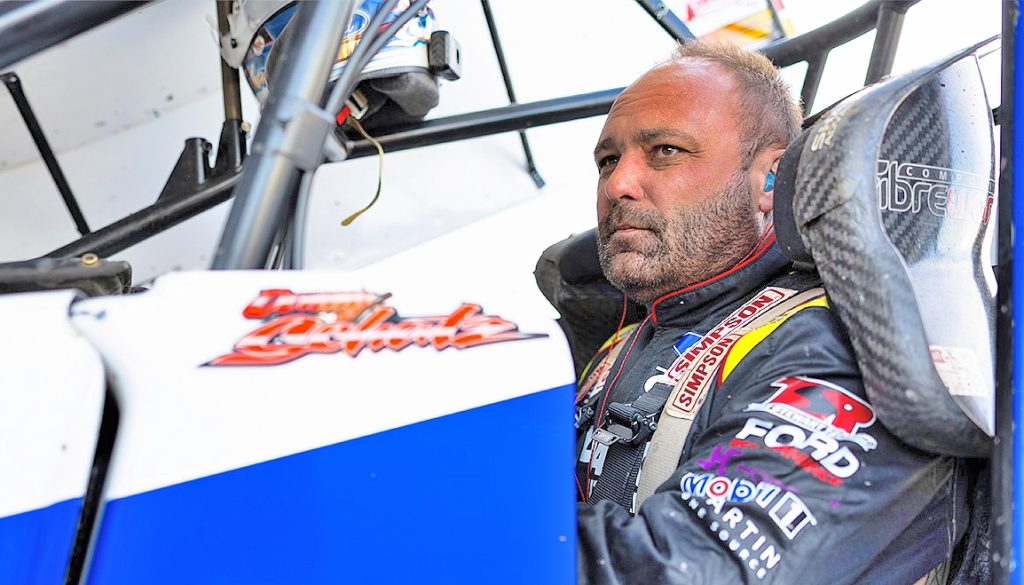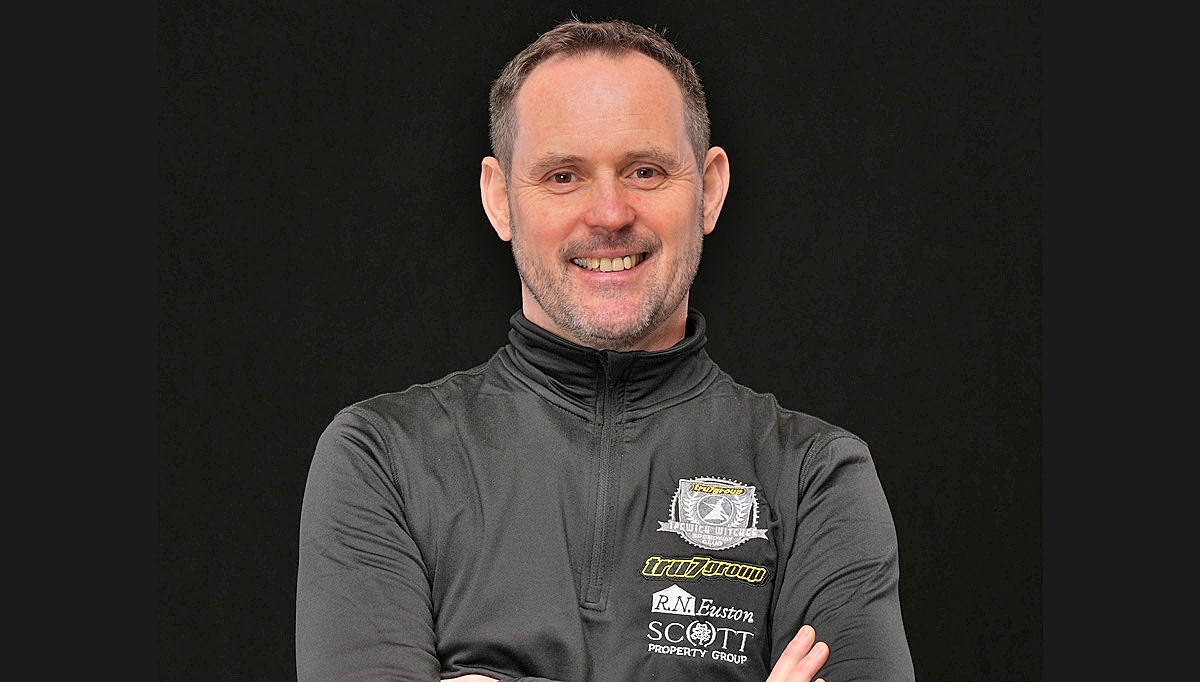TONY STEWART BREAKS SILENCE ON DONNY SCHATZ SPLIT
By Simran Kaur:
Tony Stewart Racing has officially parted ways with longtime driver Donny Schatz, marking the conclusion of an extraordinary 18-year partnership that yielded eight World of Outlaws Sprintcar Series Championships and nine wins at the Knoxville Nationals.
The announcement of this split comes as Stewart reflects on the evolving landscape of motorsports, highlighting the growing demands and technical challenges that led to significant Tony Stewart Sprintcar team changes.
On Tuesday evening (August 12), Stewart discussed the decision in a candid interview, addressing the dissolution of his relationship with Schatz, the rationale behind the timing, and the underlying struggles both parties faced in an environment of the rapid technological evolution and mounting frustration.
BEHIND THE DECISION
Stewart compared his choice to end the partnership to his earlier announcement about the Stewart-Haas Racing NASCAR closure, admitting there was “never an ideal time” for such significant moves. He described a scenario plagued by a shrinking Sprintcar off-season and increasing pressure: both Schatz and Stewart’s team had grown deeply dissatisfied, and continuing together seemed unsustainable for either party.
Both sides experienced escalating frustration—according to Stewart, Schatz was “miserable driving the car” while the team found themselves unable to resolve persistent issues. Amid rising tensions and unhappiness on the track, Stewart noted the importance of making the change now, suggesting that an earlier separation would allow Schatz an opportunity to secure a new ride and build a solid program for the following year, and provide Stewart’s organisation the chance to reassess its own direction.
Stewart said the Knoxville Nationals offered some hope as Schatz managed a respectable finish, but overall, results had been disappointing. In the wake of this decision, Kerry Madsen was slated to step into the car, with Stewart expressing confidence based on Madsen’s previous performances with the team. Despite the emotional weight of ending an 18-year collaboration, Stewart emphasised that the split was necessary for the well-being and competitive prospects of both parties.
THE CHALLENGE OF EVOLVING TECHNOLOGY.
Exploring the underlying causes, Stewart addressed how motorsports — and especially the Sprintcar sector — have experienced relentless technological advancement. He explained that incessant change is the norm in this corner of the sporting world, contrasting it with the stability found in basketball and football. Maintaining competitiveness often demands continuous investment, and Stewart questioned how many owner–driver combinations had endured as long as he and Schatz.
Despite feeling pride in the years spent together and the titles won, Stewart acknowledged that such longevity is rare, even if that does little to ease the pain of the split. He pointed out that nobody expects these partnerships to end, drawing comparisons with marriages and the inevitability of difficult endings. Stewart had intended to provide Schatz a car for as long as Schatz wanted to race, but persistent on-track struggles and a lack of progress prompted deeper reflection and ultimately, a difficult conclusion.
In his efforts to improve performance, Stewart detailed extensive financial and emotional investment in a new motor program—a process that failed to deliver the desired results for Schatz.
“AT SOME POINT, YOU GOT TO JUST SAY IT’S JUST NOT WORKING AND WE’RE NOT ABLE TO GET IT WHERE HE WANTS IT. MAYBE IT’S JUST TIME FOR A CHANGE,” Stewart admitted.
He wanted what was best for Schatz and the team, and after countless attempts to address performance and comfort, the sense of futility became impossible to ignore.
ATTEMPTS TO SOLVE PERSISTING PROBLEMS.
Throughout the final seasons of their partnership, Stewart and his team explored every conceivable avenue for improvement. Stewart recounted the employment of three different crew chiefs, the adoption of several motor programs, and trials of every available shock package and torsion bar in an effort to deliver the car feel Schatz required. Despite these exhaustive efforts, neither driver nor team was satisfied.
Stewart characterised the situation as reaching a breaking point, where continuing to “DO THE SAME THING OVER AND OVER AND EXPECTING A DIFFERENT RESULT” simply no longer made sense. He respected Schatz too much to persist with a solution that clearly wasn’t working and pointed out that a fresh start might also reinvigorate Schatz’s career, similar to the initial boost their partnership once provided.
DEALING WITH MISINFORMATION AND PUBLIC CRITICISM
As news broke of the Tony Stewart Sprint Car team changes, Stewart candidly addressed misconceptions and criticism from the racing community and fans. Marking 25 years at the helm of his racing programs, Stewart expressed frustration over negative commentary and speculation about his decisions and motivations. He found it particularly difficult to read unsubstantiated claims about the effort his team invested, especially regarding the technical difficulties of maintaining a cutting-edge Sprintcar program in the face of relentless change.
He emphasised the immense behind-the-scenes effort that went into engine development, specifically collaborations with Ron Shaver, Paul Kistler, and Andy Durham, and the intensive process of building Ford program, and (we) “DON’T EVEN HAVE A MOTOR TO SHOW FOR IT RIGHT NOW,” – Tony Stewart Team Owner.
According to Stewart, some critics have vastly underestimated the complexity and resource demands of fielding an elite Sprintcar operation. He voiced his discouragement that some fans and onlookers failed to grasp the multifaceted realities or appreciate the genuine commitment and sacrifices made by himself, his drivers, and his team.
Stewart also addressed the emotional strain of public opinion:
“I WAS MORE WORRIED ABOUT OUR PROGRAM AND HOW ALL OF US WERE GOING TO COME OUT OUT OF THE OTHER END OF THIS. AND THEN TO SIT THERE, IT JUST MAKES YOU SIT THERE AND GO, ‘WHY DO WE EVEN TRY WHEN PEOPLE SIT THERE OR HAVE THAT IDIOTIC APPROACH OF SAYING THE STUPID S— THAT THEY SAY?’ ”
He rejected the idea that lack of effort led to the split or to on-track struggles, framing such accusations as deeply hurtful and divorced from reality.
MANAGING CHANGE AND LOOKING TO THE FUTURE
Despite the turbulent end of a long-standing driver–owner bond, Stewart made clear his determination to keep his Sprintcar team active and competitive. He suggested that installing new talent in the car—beginning with Kerry Madsen—would allow the organisation to evaluate and reestablish its performance baseline, helping to determine what further changes were necessary.
Stewart firmly dismissed speculation that his wife Leah had any influence on operational decisions or the direction of the team, responding to unfounded allegations circulating among some fans.
“MY WIFE, READING COMMENTS AND PEOPLE BLAMING MY WIFE (LEAH) IS THE MOST LUDICROUS THING I’VE EVER SEEN. I MEAN, OF ALL THINGS, WE’RE A F— RACING FAMILY. SHE’S A RACER. AND NOBODY’S BEEN MORE SUPPORTIVE OF EVERY VENTURE, WHETHER IT WAS WHEN WE MET WITH THE ALL STARS, WITH ELDORA (SPEEDWAY IN ROSSBURG, OHIO), WITH (THE NOW-DEFUNCT) SRX (SERIES), WITH STEWART-HAAS. I MEAN, NOBODY WAS MORE SUPPORTIVE OF ALL OF IT THAN HER.” — TONY STEWART, TEAM OWNER.
Evaluating team structure, Stewart indicated no immediate plans to withdraw from racing:
“THIS ISN’T A SITUATION WHERE WE’RE TRYING TO LEAVE THE SPORT.”
Instead, he expressed a commitment to re-evaluation and improvement, beginning first with stabilising the current operation before looking ahead to the next season’s strategies.
OPERATIONAL ADJUSTMENTS AND MAINTAINING CONTINUITY.
Stewart acknowledged the importance of retaining car number 15 through the rest of the World of Outlaws season, later considering a return to the familiar number 14 out of respect for tradition. The team’s ongoing participation in points standings is a clear sign that Stewart intends for his squad to remain visible and competitive amid industry change.
The search for future drivers has already generated significant attention and Stewart noted renewed enthusiasm among competitors for the open seat.
Despite recent struggles, he felt encouraged by the respect his team continued to receive from peers, remarking that the level of interest in the role helped validate the organisation’s reputation in the Sprintcar world.
“MY PHONE’S BEEN VERY BUSY, SO THERE’S A LOT OF INTEREST OUT THERE, WHICH MAKES ME FEEL GOOD. I MEAN, WE’VE HAD TWO OR THREE YEARS HERE IN A ROW WHERE HAVEN’T HAD VERY GOOD RESULTS AND IT SHOWS THAT, YOU KNOW, PEERS AND PEOPLE THAT WE RACE AGAINST STILL HAVE FAITH IN OUR PROGRAM. SO THAT DOES MAKE YOU FEEL GOOD AS AN OWNER AT LEAST,” —TONY STEWART, TEAM OWNER
SIGNIFICANCE OF THE SPLIT AND WHAT COMES NEXT.
The dissolution of the partnership between Tony Stewart Racing and Donny Schatz represents a watershed moment in Sprintcar history, given the immense success the pair achieved over nearly two decades. Their split reflects both the personal toll and the complex realities teams face in adapting to persistent technological, performance, and organisational challenges.
For the remainder of the season, all attention will be on how Stewart’s team responds to the Tony Stewart Sprintcar team changes, how Schatz adapts with new opportunities, and how the competitive landscape continues to evolve in the World of Outlaws Sprintcar Series. The motorsports world will be watching closely as new talent arrives and longstanding traditions are reshaped in the wake of this high-profile parting.




